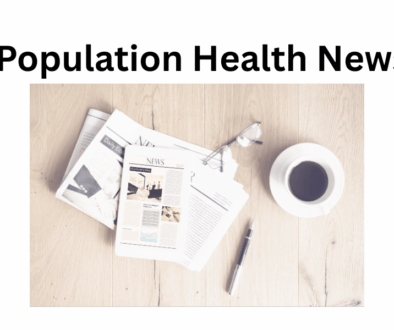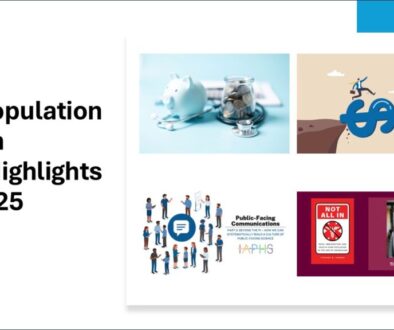Population Health News Round-Up: May 2024
JoAnne DyerIAPHS Members in the News

Emily Dore will start a post-doc position with Rita Hamad at the Harvard School of Public Health in June.
Sandro Galea is stepping down as the dean of the Boston University School of Health at the end of 2024. He then begins a new position as the inaugural dean of the School of Public Health at Washington University, St. Louis.
Alina Schnake-Mahl was recently awarded funding “to study how state preemption laws affecting immigrant sanctuary policies impact the lives and health of Hispanic and Latino people in the U.S.” (Drexel University Urban Health Collaborative news, May 2024)
Alan B. Cohen introduces the March 2024 issue of Milbank Quarterly, which includes articles on transportation justice, the Orphan Drug Act, and housing for people with disabilities.
Andrew London in PLOS ONE: “Specifically, veterans self-reporting PD [psychiatric disorders] and/or TBI had significantly higher odds of self-reporting hypertension (i.e., medical provider-identified high blood pressure).” (March 18, 2024)
Rachel Bergmans in PAIN: “Having a COPC [chronic overlapping pain condition] increased the risk of long COVID features….” (May 2024)
Roland Thorpe Jr. is quoted in Hopkins Bloomberg Public Health. Thorpe is working with a team of researchers aiming to understand how structural racism contributes to disparities in dementia. (May 15, 2024)
Health Equity and Disparities
Cancer in LGBTQ+ communities: Minority stress and intersectionality may contribute to cancer disparities in LGBTQ+ groups. Higher rates of excess body weight, smoking, and physical inactivity may also play a role. (American Cancer Society’s Cancer Facts & Figures 2024, Special Section)
Some cancer disparities remain, but some have improved: “Despite some progress, substantial differences in cancer burden remain.” For example, the disparity in lung cancer deaths between Black and White populations has been “drastically reduced.” (American Association for Cancer Research Disparities Progress Report 2024)
Environmental Health and Justice
Climate change is a bigger threat for older adults: Ensuring communities can meet the needs of older adults “makes our communities safer, more livable, and more climate-resilient for everyone.” (Sightline Institute interviewing Danielle Arigoni about her book, Climate Resilience for an Aging Nation, Island Press, 2023)
Marginalized communities in Wichita and Kansas City are fighting for environmental justice: Community and neighborhood groups and the EPA are working together to improve factors like air pollution. (KMUW, May 20, 2024, and Flatland KC, May 16, 2024)
Built Environments, Spaces, and Places
New book documents inequities and segregation built into cities: Private property restrictions, followed later by local zoning, federal housing policies, and deceptive real estate practices shaped racial segregation in the U.S. (Patchwork Apartheid: Private Restriction, Racial Segregation, and Urban Inequality, by Colin Gordon, Russell Sage Foundation Publishers, 2023)
Transportation increasingly seen as a social determinant of health: Mobility plays a role in population health and individual health; transportation justice could help people not only get to appointments but also “access healthy food, education, employment opportunities, and exercise.” (Milbank Quarterly, March 2024)
Policy and Programs
State-level abortion restrictions fall harder on women of color, uninsured women: Black and American Indian/Alaska Native women are more likely to live in states with abortion restrictions or bans. “The bans may widen the already stark racial disparities in maternal health.” (Kaiser Family Foundation, April 24, 2024)
Washington State’s new healthcare benefit is portable: The WA Cares Fund, which provides benefits such as home care, long-term care, and food delivery, can now be used if you move out of Washington State. (Medium.com, by Washington State Governor Jay Inslee, May 16, 2024)
Program helps adolescents experiencing food insecurity: Adolescents need more calories, but are often underserved in food assistance programs. A Baltimore program attempts to close the hunger gap. (Hopkins Bloomberg Public Health, May 16, 2024)









All comments will be reviewed and posted if substantive and of general interest to IAPHS readers.